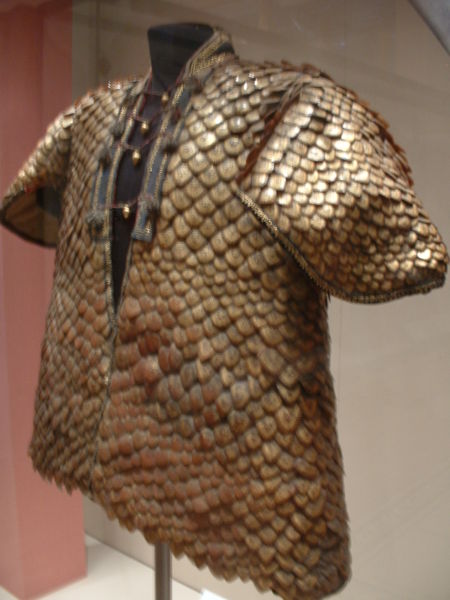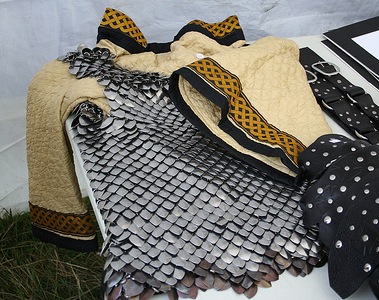Scales (V7)
Relating to Armor (V7)
From the Rulebook (V7)
Scales are composed of metal (+2) or 3/16” hardened leather (+1), and must be overlapping in order to recive the bonus armor point . Scales may not be added to metal armor. Scales need only be attached to the armor along one edge.
About Scale
Scale armour (armor), Lorica squamata consists of many small scales attached to a backing material of either leather or cloth. It is similar to lamellar armour but distinguished by the presence of the backing material and it more flexible than lamellar. It is sometimes erroneously called scale mail and should not be confused with jazerant.
The material used to make the scales varied and included: bronze, iron, rawhide, leather, cuir bouilli and horn. The variations are primarily the result of material availability.
During Roman times scale armour (lorica squamata) was a popular alternative to mail (lorica hamata) as it offered better protection against bludgeoning. It was also widely used in Middle Eastern empires such as Persia and Byzantium. In these areas scales were commonly dished (an armouring term used to describe hammering a depression into a flat piece of metal in order to create a 'bowl' effect) in order to benefit from the extra protection offered by a rounded scale.
According to the statement of Herodotus, the ancient Persians wore tunics with sleeves of diverse colours, having upon them iron scales of the shape of fish-scales; and this comparison leaves no doubt that scale armour, and not chain mail, is meant. Scale armour offers better protection from blunt attacks than mail. It is also cheaper to produce[citation needed], but it is not as flexible and does not offer the same amount of coverage. Forms other than brigandine and coat of plates were uncommon in medieval Europe, but scale and lamellar remained popular elsewhere.
Modern forms of scale armour are sometimes worn for decorative or LARP purposes, and may be made from materials such as steel, aluminium, or even titanium.
A new take on this type of armour is the Dragon Skin body armor which uses modern fabric and high-impact resistant ceramic plates to protect against modern ammunition.

